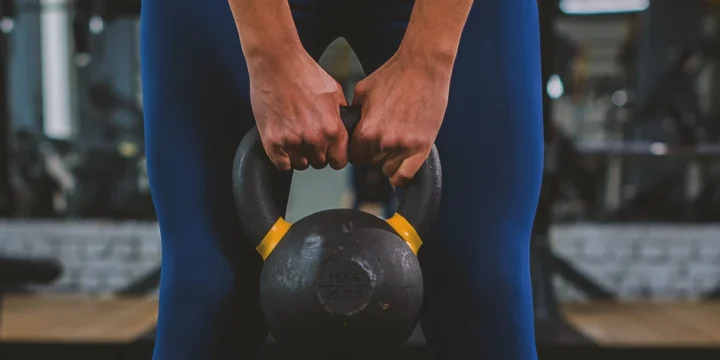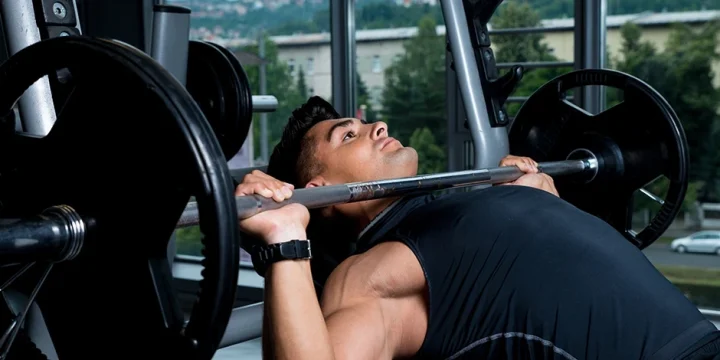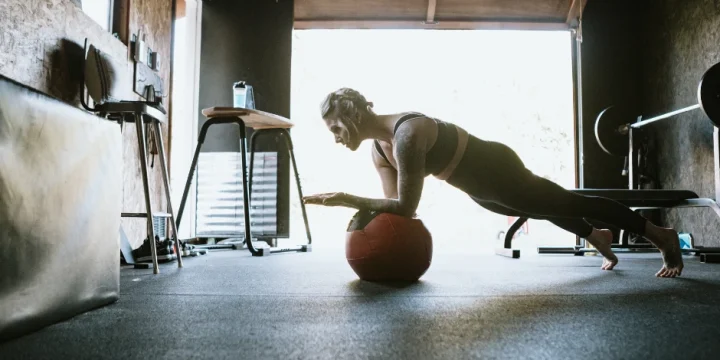Most people have no idea sandbag is a versatile and affordable gear that can effectively engage and strengthen most of your muscles.
In fact, there are different sandbag workout routines you can perform. These exercises are structured for different parts of the body.
It has been proven that sandbag workouts help you gain strength, build muscle, burn fat, improve balance, and much more without spending a fortune while enjoying the comfort of your home gym.
As a certified personal trainer, I tested over 20 sandbag exercises and singled out only the best below.
Quick Summary
- Incorporate sandbag exercises like hammer curls, burpees, and snatches for a comprehensive full-body workout.
- Effective sandbag workouts require proper positioning for each specific exercise.
- One of the studies from the Journal of Strength and Conditioning Research website indicates that sandbag training, more precisely burpees, can improve cardiovascular fitness comparable to sprint intervals on a stationary bike.
- From my experience, sandbag workouts offer a fun, challenging, and highly effective alternative to traditional gym routines.
1. Sandbag Curtsy Lunge
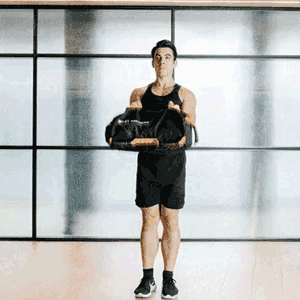
Stand with your feet hip-width apart while holding a sandbag with both hands at your left shoulder.
Bend your left knee into a curtsy lunge position, i.e. step your left foot behind and outside your right foot so that your right thigh is parallel with the floor while your left knee is just above it.
Simultaneously lower the bag across your body to outside your right thigh.
Get back to the starting position. Then, repeat the same with the opposite leg.
You can also experiment with using a slam ball for this exercise instead of a sandbag.
Do three sets of ten reps with one-minute rest in between.
This double-cross variation of curtsy lunge exercise engages both the upper and lower body, targeting your shoulders and core, glutes, inner and outer thighs, improving your hip flexibility, pelvic and knee stability.
Also Read: Best Saddlebag Exercise
2. Sandbag Hammer Curl

While standing with your flat back, tense forearms, elbows tucked, feet hip-width apart, and knees slightly bent, hold the sandbag by its ends or side handles (in a neutral grip) in front of your hips.
Bending your elbows, curl the sandbag toward your chest, stopping at the shoulder level. Pause, then lower it back down slowly.
Do three sets of ten reps, taking a minute rest between each set.
Based on my experience, this is one of the sandbag exercises that can lead to strong perfectly-shaped biceps fast.
It targets the outer head of the biceps brachii and the other elbow flexors brachialis and brachioradialis, also engaging your chest and back.
3. Sandbag Burpee

Start this sandbag workout standing with your feet hip-width apart and holding the sandbag sides with both hands in front of your hips.
Squat down, hinging your hips back, and placing the sandbag on the floor while still holding it.
Then, kick your feet back into a plank position, with your back straight, core engaged, and knees and hips lowered to the floor, touching the bag with your chest.
Quickly push back up, immediately jump your feet back toward your hands, and explode upward.
You may punch the sandbag overhead thruster-style or slam it to the floor to engage your whole body, build strength, endurance, and power.
Begin the next rep right away. Complete as many rounds as you can in a fixed time-frame.
One of the studies from the Journal of Strength and Conditioning Research website indicates that burpees can improve your cardiovascular fitness and performance, just like sprint intervals on a stationary bike, but in less time. [1]
4. Sandbag Snatch
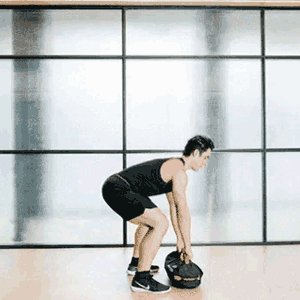
With your upper body bent to the front, back flat, hips pushed back, and legs shoulder-width apart, hold the sandbag on your feet using the overgrip handles.
Pull your shoulders back, arms and elbows directly up to the front on the chest height, and move hips forward explosively.
Extending your legs simultaneously and coming up onto the forefeet to generate more power and support the swing.
Swinging the sandbag to your chest, extend your forearms, and open your elbow joints to move it back over your head.
After reaching full hip extension, throw your hips back again, slam heels to the floor, and lockout.
Then, lower the sandbag slowly, bending your knees slightly and bringing back your upper body into a flexed position.
Requiring lower body power, explosive and functional upper body strength, and stability, sandbag snatch is great for burning fat, gaining strength, improving flexibility and joint mobility.
Other types of exercises:
5. Bent-Over Sandbag Row
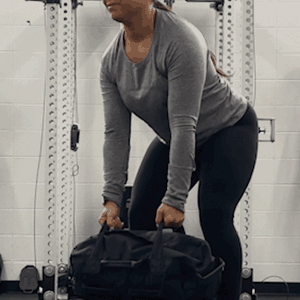
Let the sandbag hang in front of your knees with your palms facing inward while you’re standing with your back flat.
Elbows tucked, hips hinged, knees slightly bent, feet hip-width apart, and your torso lowered almost parallel to the floor.
Bend your elbows and draw your shoulders back, pulling the sandbag to your lower chest and hold it for a moment.
Then, extend your arms to return to the starting position.
Keep your shoulder blades together like you’re squeezing an orange between them to activate the right muscles and get a perfectly sculpted V-shaped torso (core, biceps, shoulders, upper and middle back - rhomboids, traps, lats, and rear deltoids).
Keep your glutes engaged to help protect your lower back.
Perform three rounds of 8-12 reps, resting one minute.
For a greater challenge, increase the bag weight.
“A beginner should use a sandbag that’s 25% of their bodyweight, and an intermediate can use 50%, but once you’ve mastered it you can use 80-100%.”
- Andrew Tracey, Outdoor Training Expert
6. Sandbag Back Squat
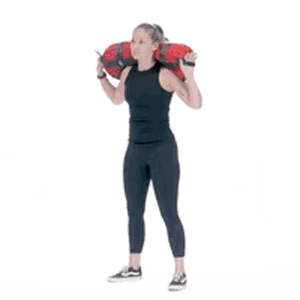
Place the sandbag horizontally across your upper back, keeping the lower back tight and pushing the chest out while standing with your feet shoulder-width apart and slightly turned outwards.
Bend your knees and push your hips back into the squat, keeping your weight in the heels and knees in line with the toes.
Then, return to the top position.
Complete three sets of 5-12 reps with one-minute rest.
I found through my testing that if you have ankle mobility issues or other joint issues, you may do the sandbag front squat instead (holding the bag on your upper chest).
Another study found on the PubMed website shows that front squats are gentle yet equally effective in overall muscle recruitment - glutes, hip flexors, quads, calves, and hamstrings. [2]
Related: Sandbag Leg Workouts
7. Sandbag Clean & Press

Start from the deadlift position. Grab the sandbag handles and lift it from the ground up onto your chest, flipping it over swiftly through the hip drive, landing in a shallow squat.
Then, press the bag overhead with your arms fully extended, and safely bring it back down to your shoulders, then to the floor.
Three to five sets of 10 reps will be fine.
This combination of the two fundamental sandbag exercises, the clean and the press, is perfect for building strength, conditioning, power, and endurance while working your whole body.
It mainly targets your shoulders, traps, forearms, quads, glutes, and hamstrings.
8. Around the World
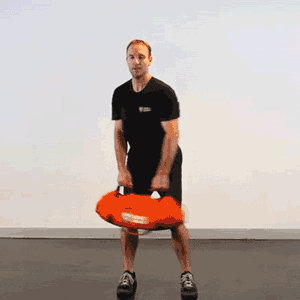
You can start this exercise standing or kneeling on the ground and holding the bag by neutral handles in front of your thighs.
Then, slowly and without moving your trunk, swing the bag in circles around your head and body like you’re putting on a jacket.
You can continue twisting the bag in the same direction or alternate directions with every rotation.
Performing three sets of five reps in each direction should suffice to work your arms and abs, improve your shoulder mobility, build flexibility, increase conditioning, and strengthen your core.
9. Sandbag Spider Crawl with Lateral Pull
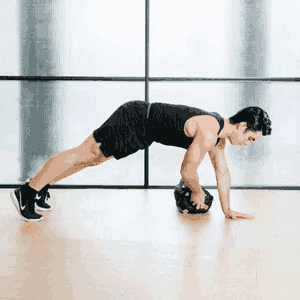
Get in a high plank position with your back straight and your shoulders and hips still (no twisting). Place the sandbag on the ground to the right of your right arm.
Grab the bag by the end handle with your left hand and drag it to the left (under you). When your left hand is down on the floor again, draw your left knee to your left elbow.
Repeat the movements with the right hand and leg, alternating sides to engage your whole body and particularly strengthen your core, arms, and chest.
10. Sandbag Russian Twist

Sit down, leaning back some 45 degrees to engage your abs and holding the sandbag across your abdomen with your arms extended, core tight, knees bent, and feet off the floor.
Then, twist the torso quickly, turning from side to side. Do three sets of at least 12 reps or as many reps as you can in 20 seconds.
In my experience and based on my analysis, this movement will strengthen and stabilize your back, upper and lower abs, obliques, etc. [3]
Other types of exercises:
FAQs
What Are the Unique Muscle Activation Patterns in Sandbag Training?
Sandbag training uniquely activates stabilizing muscles due to the shifting weight of the sand, offering a dynamic workout that challenges the body differently than static weights. This leads to improved balance and core strength as muscles adapt to the unpredictable nature of the sandbag's movement.
How Does Sandbag Training Compare to Other Functional Training Tools?
Compared to tools like kettlebells or medicine balls, sandbags provide a more unstable and variable form of resistance, enhancing core stability and functional strength. This makes sandbag training particularly effective for real-world activities where balance and adaptability are key.
Can Sandbag Training Be Used in Rehabilitation Programs?
Sandbag training can be effectively incorporated into rehabilitation programs due to its low impact and adjustable intensity. It helps in injury recovery by gently strengthening muscles and joints through controlled, natural movements.
How Can Sandbag Training Enhance Specific Sports Performance?
Tailoring sandbag exercises to mimic sports-specific movements can significantly enhance athletic performance. The functional strength and stability gained from sandbag training directly translate to improved agility, power, and endurance in various sports.
What Are the Psychological Benefits of Sandbag Training?
Sandbag training not only improves physical strength but also offers psychological benefits such as enhanced focus and stress relief. The need for concentration on balance and technique during exercises helps in mental engagement and provides a form of meditative workout.
References
- https://journals.lww.com/nsca-jscr/Fulltext/2014/11000/Comparison_of_Responses_to_Two_High_Intensity.3.aspx
- https://pubmed.ncbi.nlm.nih.gov/19002072/
- https://www.healthline.com/health/russian-twist
About The Author
You May Also Like

